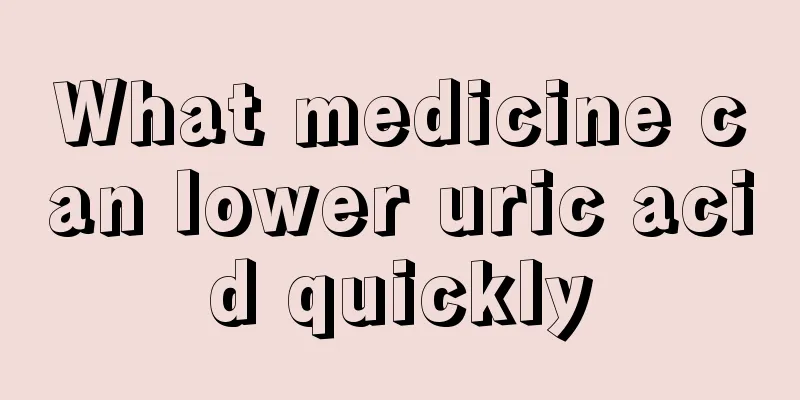Is aortic sclerosis serious?

|
Aortic sclerosis is a common physical disease among middle-aged and elderly people. It is a lesion in the human arteries that can easily lead to blockage of human blood vessels and harden the aorta, which is very dangerous to health. Aortic sclerosis is a relatively serious disease that can easily lead to obstruction of blood supply to human organs and cause ischemia of human organs. Is aortic sclerosis serious? Aortic sclerosis is a common type of arteriosclerosis. There are three main types of atherosclerosis: ① Small arteriosclerosis; ② Arteriosclerosis of the media; ③Atherosclerosis. This disease mainly affects the aorta, coronary arteries, cerebral arteries and renal arteries, which can cause narrowing or even occlusion of the lumen of the above arteries, leading to aortic dissection and abdominal aortic aneurysm; causing blood supply obstruction to the organs they supply, leading to ischemic pathological changes in these organs. Causes The most important causes of aortic sclerosis are hypertension, hyperlipidemia and smoking. Other factors such as obesity, diabetes, lack of exercise, stress, old age, family history, and bad temper can also cause arteriosclerosis. Clinical manifestations Most have no specific symptoms. During percussion, it can be found that the aortic dullness area behind the sternal manubrium is widened; the second heart sound in the aortic valve area is hyperactive and has a metallic tone, and there is a systolic murmur. The systolic blood pressure is increased, the pulse pressure is widened, and the radial artery palpation may be similar to a rapid pulse. X-ray examination shows that the aortic knot bulges to the upper left, the aorta is dilated and twisted, and sometimes calcium deposits can be seen in flake-like or arc-shaped plaques. The lesions often occur in the posterior wall of the aorta and the openings of its branches. The abdominal aorta is the most severely affected, followed by the descending aorta and aortic arch, and then the ascending aorta. In severe cases, the plaque ruptures and forms atheromatous ulcers, on the surface of which mural thrombi may form. In some cases, due to atrophy of the SMC in the tunica media and rupture of the elastic plate, the local wall becomes weak and the wall bulges outward under the action of blood pressure, forming an aortic aneurysm. This type of aneurysm is mainly found in the abdominal aorta. Occasionally, aneurysms rupture and fatal bleeding occurs. Sometimes a dissecting aneurysm occurs. In some cases, the intimal lesions of the aortic root are severe, affecting the aortic valve, causing the valve to thicken, harden, and even calcify, forming aortic valvular disease. complication 1. Abdominal aortic aneurysm It is usually discovered during physical examination because of a pulsating mass in the abdomen. A murmur can be heard in the corresponding part of the abdominal wall, and the femoral artery pulsation may be weakened. 2. Thoracic aortic aneurysm It can cause chest pain, shortness of breath, dysphagia, hemoptysis, vocal cord paralysis due to compression of the recurrent laryngeal nerve, tracheal displacement or obstruction, and compression of the superior vena cava and pulmonary artery. |
<<: What causes basilar artery sclerosis?
>>: What to do if a boy has too much leg hair
Recommend
Boil fresh orange peels in water
Fresh orange peels cannot be used to soak in wate...
My fingers itch and there are small hard lumps
It is not uncommon for fingers to itch and have s...
What are the benefits of black wolfberry tea
Black wolfberry is completely different from ordi...
What is the difference between powder eyebrow and mist eyebrow?
The main differences between powder eyebrows and ...
Do six cervical health exercises to prevent cervical spondylosis
To prevent the occurrence of cervical spondylosis...
What foods can I eat and how to treat nasopharyngeal cancer
No matter what disease you have, you should take ...
Is there any relationship between acne and sex life? Is there any relationship between acne and sex life?
A good sex life is a way for couples to enhance t...
What is the cause of coccyx pain? It is caused by these reasons
There are many patients who suffer from coccyx pa...
The harm of stewing pot
In order to save time in making breakfast, many p...
Will a fish bone stuck in the esophagus dissolve?
Fish is fresh and delicious and is very popular a...
Will varicocele cause back pain?
The spermatic cord is a blood vessel that exists ...
There are 9 misunderstandings about lung cancer. To prevent lung cancer, you need to have these six habits!
Lung cancer in China is in a period of rapid incr...
What are the best treatments for lung cancer? There are 3 best treatments for lung cancer
Lung cancer can cause harm to us. I believe many ...
How about moxibustion to treat premature gray hair
Moxibustion is a health-preserving method that ha...
There are 9 ways to treat rheumatism
As we all know, rheumatism is extremely harmful t...









